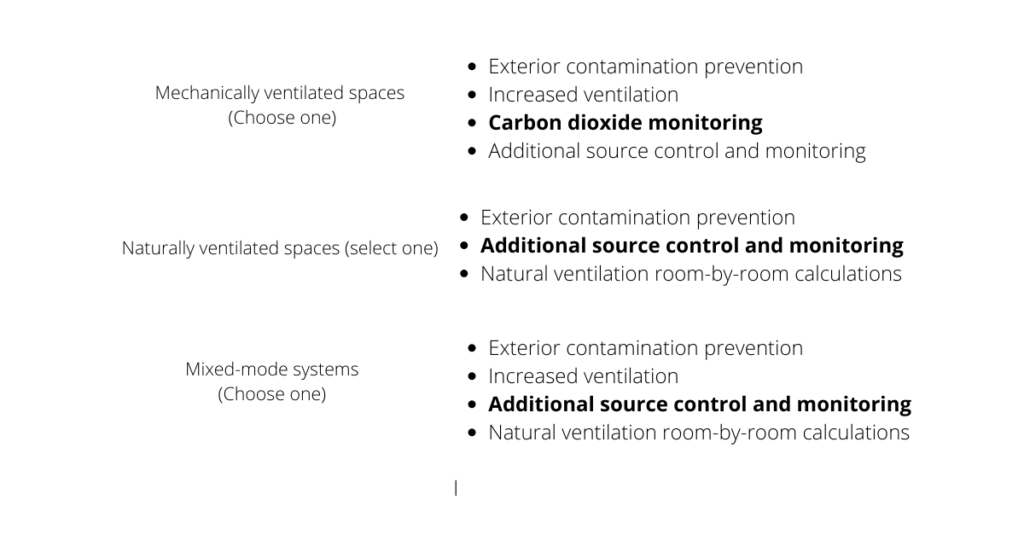Indoor air quality is currently one of the most important aspects considered in sustainable construction standards. Nanoenvi IAQ is a device that can help to get the air quality requirement in the LEED certification process, one of the reference green building certification systems, reducing costs and time associated with performance tests for measuring air parameters. In this post, we explain everything you need to know about the indoor air quality requirement in LEED and what are the advantages of using a device like Nanoenvi IAQ.
What is LEED?
LEED is a green building certification that has established itself as the benchmark assessment system for sustainable buildings. Created in the 1990s by the U.S. Green Building Council, its main objective is to promote more ecological and efficient building strategies. LEED v4.1 is the most current version of this standard that has four rating levels: certified, silver, gold and platinum. These levels are based on the number of points obtained in the different requirements. The more points you earn, the more options you have to achieve the highest level of certification.
Air quality in LEED: what is its importance?
Indoor Environmental Quality (EQ) is one of the seven categories that make up the LEED program. This is a requirement that aims to emphasize the health and well-being of the occupants.
Air quality monitoring with a device like Nanoenvi IAQ can help in the certification process to earn points in these three areas:
- Enhanced Indoor Air Quality Strategies
- Indoor air quality assessment
- Indoor air quality performance.
While the first two apply to new building design and construction (BD+C) and interior design and construction (ID+C) projects, the last one is specific to existing buildings (O+M).
Improved indoor air quality strategies – BD+C and ID+C
Improved indoor air quality is a key component of the indoor environmental quality requirement. There are two options in this category:
- Enhanced IAQ Strategies – Involves Ventilation Options
- Additional Enhanced IAQ Strategies – With Air Quality Monitoring Option
Depending on the objectives of the project, you can choose to implement:

Nanoenvi IAQ is a device equipped with CO2, VOC, PM (1, 2.5, 4, 10) VOCS, temperature, humidity, and pressure sensors that can assist in carbon dioxide monitoring and monitoring of additional sources to earn points in the process of obtaining the standard.
Indoor air quality assessment – BD+C and ID+C
ID+C and BD+C projects (except BD+C: Core & Shell) can earn points is through an indoor air quality assessment. The purpose of this requirement is to establish better air quality after the completion of the construction process. To get points in this area there are two options:
- Duct purge (Flush-out). It consists of cleaning the mechanical air treatment systems prior to the building occupation phase. The temperature must be at least 15ºC and the relative humidity no more than 60%. Nanoenvi IAQ is equipped with temperature and relative humidity sensors, which can help you during the flush-out process.
- A spot check of air quality after construction and before building occupancy. Points are awarded for monitoring inorganic gases and particles, as well as for volatile organic compounds. With Nanoenvi IAQ you can continuously monitor particulate matter (PM) and VOCs.
In general, the use of a device such as Nanoenvi IAQ not only allows knowing when the air quality conditions meet the specifications of the category but also to better understand any environmental weakness of the building or interior spaces.
Indoor air quality (O+M) performance.
Existing building projects can earn LEED points through the indoor environmental quality performance credit. In LEED v4.1 with the indoor environmental quality performance, up to 20 points can be achieved. This reflects and highlights the importance of air quality as a determining aspect in sustainable construction projects. This credit requires annual or continuous measurement of total VOCs, CO, CO2, PM 2.5, and O3 levels during occupied hours at least once a year. Additional points can also be earned by submitting data to the ARC portal. Nanoenvi IAQ, in addition to monitoring air quality parameters, also has a dashboard where you can see the values in real-time and export data, something that helps document compliance.
If you are interested in Nanoenvi IAQ as an indoor air quality device to optimize efforts in the LEED certification process, contact us here.











